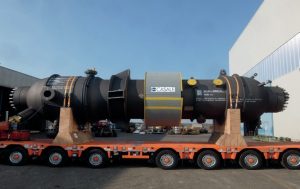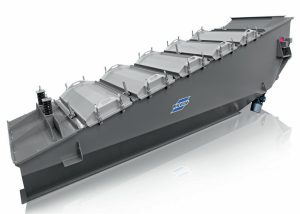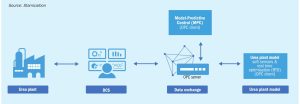
Emissions scrubbing technology
We highlight recent advances in ammonia and dust scrubbing systems for urea plants from Stamicarbon, thyssenkrupp Industrial Solutions and Toyo Engineering Corporation.

We highlight recent advances in ammonia and dust scrubbing systems for urea plants from Stamicarbon, thyssenkrupp Industrial Solutions and Toyo Engineering Corporation.

Phosphogypsum is finding increasing use in plaster and cement manufacture, roadbed construction and afforestation. We look at how previously unwanted solid waste generated by the phosphate industry is being turned into a valued resource.
Because of the ongoing pandemic, this year’s CRU Nitrogen + Syngas conference was held as a ‘virtual’ event, in early March 2021.

From new materials of construction and improved equipment designs to the latest digital tools, Casale, thyssenkrupp Industrial Solutions, Saipem, TOYO and Stamicarbon report on some of their latest achievements.
The United States has imposed duties on Russian and Moroccan phosphate imports.

This year the CRU Nitrogen + Syngas conference is going virtual. From 1 to 3 March 2021, the CRU virtual event will offer a live and on-demand agenda, interactive exhibition and enhanced networking capabilities on a platform tailored to make remote access as easy as possible.

In a carbon-constrained world, carbon capture and utilisation or storage (CCUS) installed on a methanol plant is a necessary and feasible solution. The new, patented AdWinMethanol CC® technology, jointly developed by thyssenkrupp Industrial Solutions AG and GasConTec GmbH, integrates carbon capture into large-scale, natural gas-fuelled methanol production to yield a drastically reduced carbon footprint. U. Koss and W. Balthasar of GasConTec and J. Wagner of thyssenkrupp Industrial Solutions discuss how it removes CO 2 emissions in an efficient, cost effective, and environmentally friendly manner, taking advantage of the design features of AdWinMethanol ® .
Illinois-headquartered CF Industries has made a long-term commitment to low-carbon ammonia production and net-zero emissions.

Recent innovations in fertilizer granulation include thyssenkrupp’s new process for premium ammonium sulphate production. Eirich has launched new equipment for NPK granulation, while Rhewum is also offering new screening technology.

By harnessing the power of real-time data and exploiting the opportunities provided by digital solutions plant owners can achieve greater plant efficiency and reliability. In this article Stamicarbon shows the benefits of the Stami Digital Plant Optimiser for urea plants, OnPoint Digital Solutions provides a case study on optimising primary reformer heater operations using Smart Combustion™ , TOYO provides an update on its digital transformation service DX-PLANT® and thyssenkrupp Industrial Solutions provides examples of how digital solutions can be used to improve plant operation.